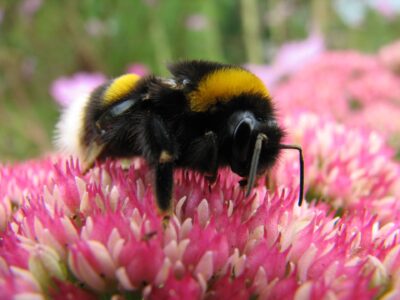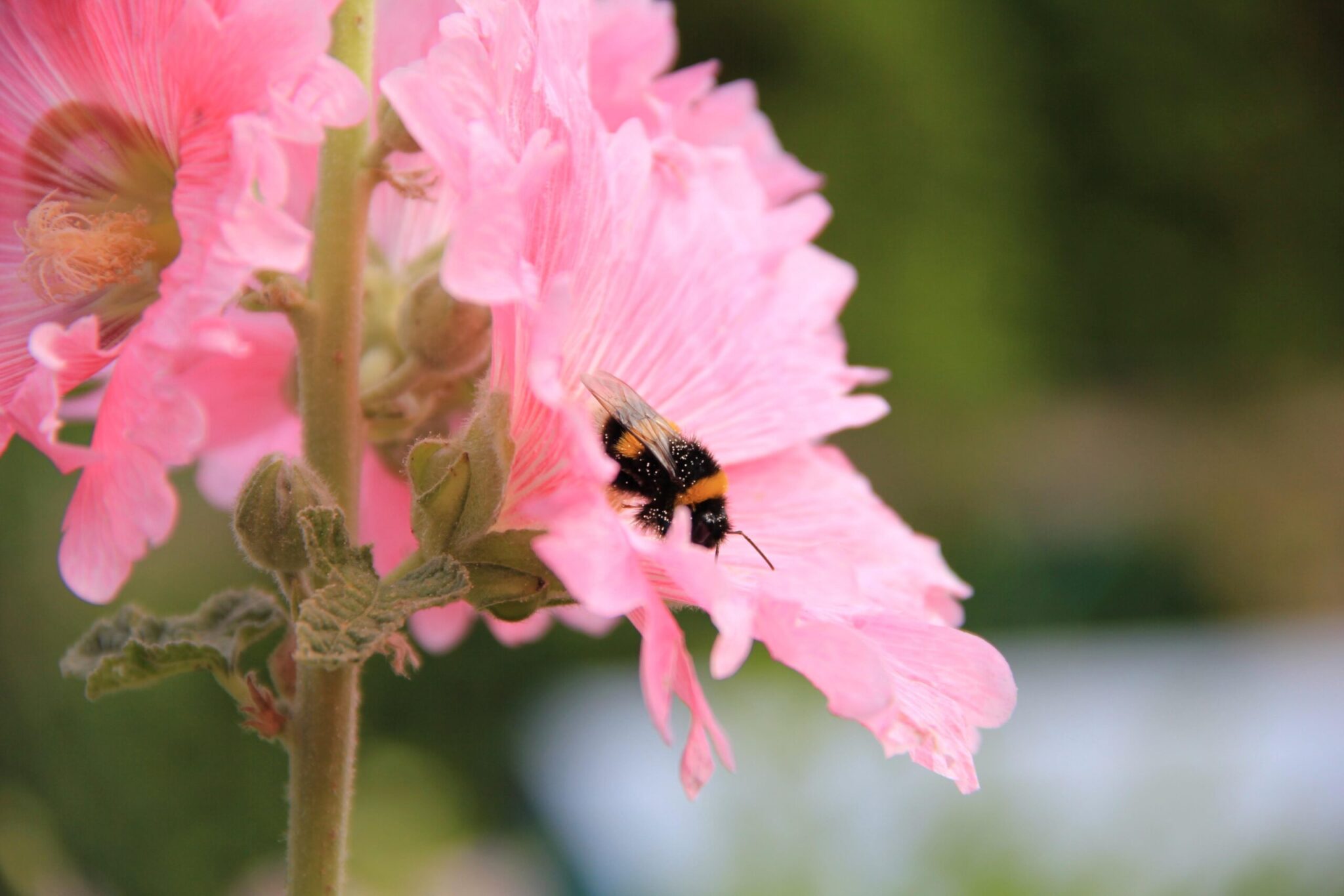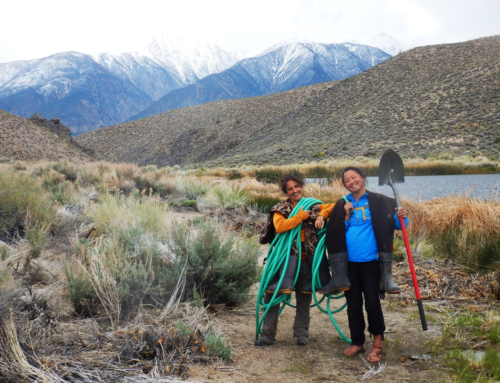Bumblebees as Pollinators
Bumblebees need no introduction. These cute, fuzzy bees are native to North America and are important pollinators for native plants and crops. There are 49 species in North America and all are part of the genus Bombus.
Unlike the miner bees from Tuesday’s blog post, bumblebees are social. A queen finds a nest after winter, often underground, and produces a few generations of worker bees over the summer. The worker bees gather nectar and pollen and help the queen raise the final generation before the winter. The new queens will burrow into the ground in late fall and emerge again in spring. Because the colonies have annual life cycles, bumblebees do not need to produce as much honey as a European honey bee hive produces.

Bumblebees have some characteristics that make them important pollinators. Different species have short, medium, or long tongues, causing them to visit different shapes and sizes of flowers. They also visit flowers that don’t produce nectar, such as tomatoes and peppers, to collect pollen to eat. Bumblebees sonicate, or buzz, the flower, shaking pollen off of the anthers. This is also called “buzz pollination”.
Check out this video on “buzz pollination” to learn more.
Unfortunately, bumblebees are in danger from pesticide use and habitat destruction. You can help our fuzzy friends by avoiding pesticides and by planting a diversity of flowers that bloom throughout the spring, summer, and fall, since bumblebees are active for a large part of the year.
Sources:






